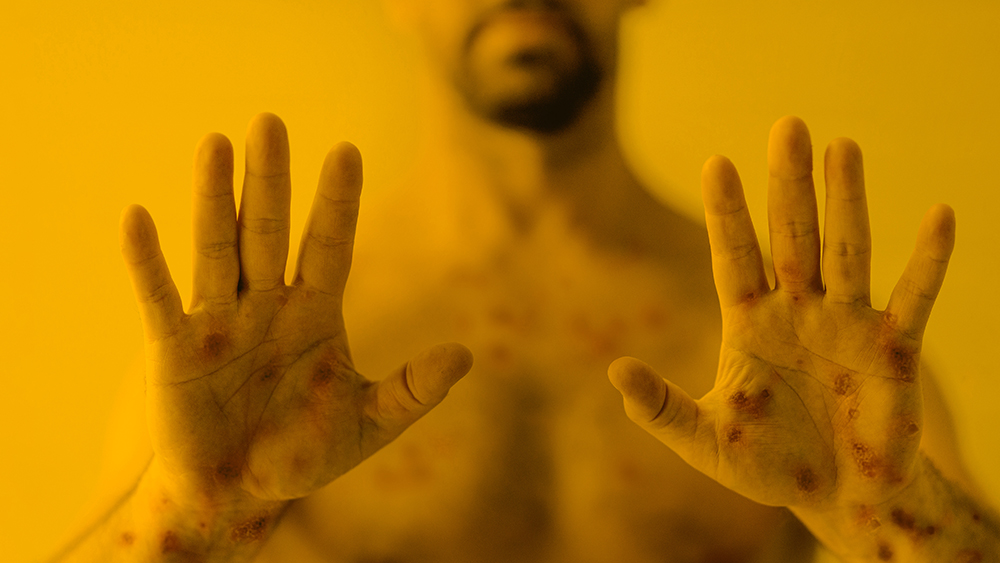Monkeypox virus is a rare virus that causes monkeypox disease. The virus is in the Orthopoxvirus genus of the Poxviridae family, which has a double-stranded DNA genome. Smallpox virus, Vaccinia virus (a less potent smallpox-like virus that is used as a vaccine against smallpox) and cowpox virus are also in the Orthopoxvirus genus. Monkeypox was first discovered in 1958. The virus was named ‘monkey pox’ after two smallpox-like outbreaks occurred in monkeys used for research. In 1970, when efforts were made to eradicate smallpox, the first case of monkeypox was reported in the Democratic Republic of Congo.
Monkeypox
Epidemiology
Monkeypox is a global health problem, not only confined to West and Central Africa but also affecting the rest of the world. The first monkeypox outbreak outside of Africa was observed in the United States in 2003 and was caused by contact of infected animals with a domestic dog. This infected pet was imported from Ghana along with the Gambian opossum and dormouse.

This outbreak has led to more than 70 reported cases of monkeypox in the United States. In addition, monkeypox in those who traveled to Israel from Nigeria in September 2018; in the UK in September 2018, December 2019, May 2021, and May 2022; in Singapore in May 2019 and in the USA in July and November 2021. In May 2022, several cases of monkeypox were detected in non-endemic countries. According to CDC Global Map and Case Count data outputs on the 2022 U.S. Mpox Outbreak, there had been a total of 85,155 confirmed cases in over 110 countries. Studies are still ongoing to understand its causative agents, epidemiology, and transmission routes.
Signs & Symptoms
In humans, the first symptoms of monkeypox were fever, headache, muscle pain, fatigue, backache, swollen lymph nodes, and chills. The incubation period of the disease (from the first infection until the symptoms appear) is 7-14 days, but this interval can vary up to 21 days. The patient usually shows a rash that starts on the face and spreads to other parts of the body. The disease usually lasts between 2-4 weeks. It has been observed that 1 out of every 10 people who contract monkeypox in Africa dies.
Transmission
It can be transmitted from animal to human by blood, body fluids, mucosal lesion, skin, or direct contact. Human-to-human transmission can occur through close contact with respiratory secretions, skin lesions, or contact with recently contaminated items. Transmission by particles of respiratory droplets often requires face-to-face contact; therefore, health workers, individuals living in the same house, and other close contacts are at great risk.

Diagnosis
If monkeypox is suspected, healthcare professionals should obtain an appropriate sample and safely transfer it to a laboratory of appropriate capacity. Confirmation of monkeypox depends on the type and quality of the sample and the type of laboratory test. For this reason, samples should be packed and transferred in accordance with national and international requirements.
Because Orthopoxvirus are serologically cross-reactive, antigen and antibody detection methods do not provide monkeypox-specific confirmation. Therefore, serology and antigen detection methods are not recommended for diagnosis or case study. In addition, recent or distant vaccination with a vaccinia virus-based vaccine (e.g. anyone vaccinated before smallpox eradication or more recently vaccinated due to higher risk, such as Orthopoxvirus laboratory personnel) may result in false positive results.
Polymerase chain reaction (PCR) is the laboratory test of choice because of its accuracy and sensitivity. For this, the most appropriate diagnostic specimens for monkeypox are from skin lesions—liquid and dry crusts from vesicles and pustules. When possible, a biopsy is also an option. Lesion specimens should be stored in a dry, sterile tube (without viral transport medium) and kept cold. PCR from blood tests is often inconclusive due to the short duration of viremia (viral presence in the bloodstream) relative to the timing of sample collection after symptoms onset.

